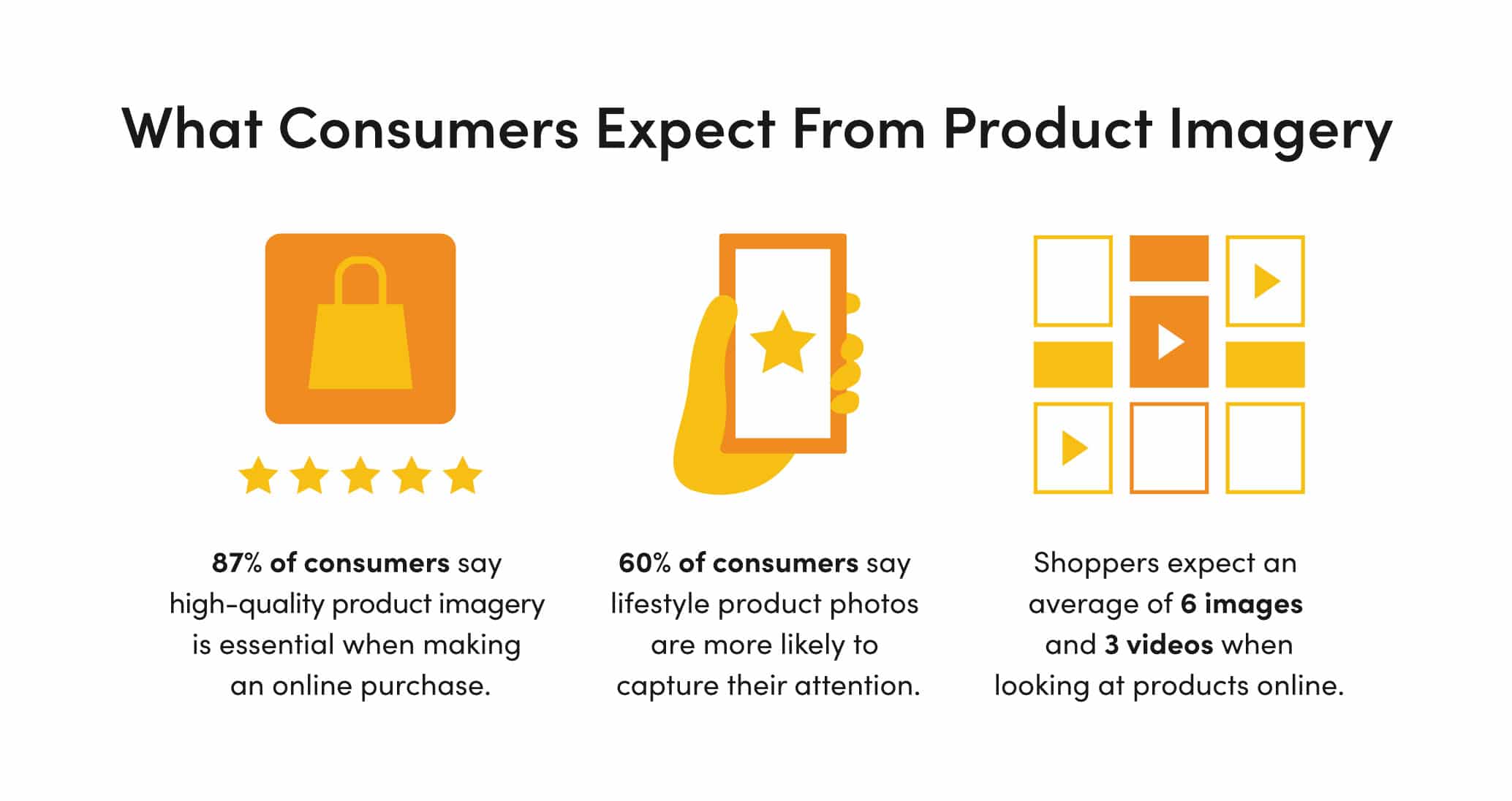In online shopping, consumers lose the ability to explore the product through touch, smell, sound, and experience. It is up to brands to fill the experiential gap with high-quality, imaginative visuals and supplemental information.
Online shoppers want to know what they are getting before they order, and will hesitate if the product’s imagery is confusing, dull, or limited. One study shows that 87% of consumers say high-quality product imagery is essential when making an online purchase.
But it isn’t enough to just have a technically correct photo.
Retailers are constantly improving their capabilities with cutting-edge technology, and consumer expectations are growing with them. Customers are bombarded with just-fine photos on social media and e-commerce websites, so they need to be wowed with high-quality photos, videos, and even interactive visual experiences to create a sense of confidence, freedom, and agency in shopping.
/*! elementor – v3.11.2 – 22-02-2023 */
.elementor-widget-image{text-align:center}.elementor-widget-image a{display:inline-block}.elementor-widget-image a img[src$=”.svg”]{width:48px}.elementor-widget-image img{vertical-align:middle;display:inline-block} 
Tips for optimizing product imagery for the web.
Context.
Placing your product in an appropriate environment with other objects to show scale instantly communicates its purpose and nature. It can spark the customer’s imagination on what to do with the product themselves.
Say you are selling a mug. Fill it with some coffee, place it at the breakfast table, and customers can envision themselves sipping away.
One marketing survey reports 60% of consumers said a photo of a product placed in a lifestyle context, as opposed to a plain white background, was more likely to capture their attention.
White backgrounds are necessary to include for some products. But don’t let that limit your creativity.
Quality.
Product photos should be staged and modeled clearly. They should be clear, well-lit, and thoughtful. Blurry, fuzzy, or overexposed photos scream amateurism, and the quality of your photo reflects the quality of your product. Technically poor photos can leave a customer wondering — what are they trying to hide with blurs or obstructions?
Quantity.
Let customers see everything your product has to offer by including lots of photos and videos.
Offer a variety of views — wide shots, details, different angles, optimal environments — and lots of them. A 2019 survey shows that shoppers expect an average of six images and three videos when looking at products online. As time goes on, those expectations are only growing.
Be sure to include shots of notable details. For example, if you are selling a bag, showcase the sturdy straps and secret pockets. That may be a selling point for customers. You put thought into your product — show it all off.
Details.
Online shoppers forfeit the ability to explore the product and get a complete, personal understanding before making a purchase. There are details that even clear photos alone can’t satisfy.
Fill in the informational gap with copy or graphics. Include technical data, shipping information, and product descriptions the camera can’t catch like fragrance, texture, or weight.
Interactivity.
Gen Z is growing consumer power. According to Reuters, 60% of Gen Z Instagram users in the United States use the platform to find and buy directly from latest brands. Many young people prefer e-commerce to traditional, in-person retail. They are mobile-first, digitally native shoppers with grand expectations when it comes to product visuals.
Young shoppers want more than simple photos or videos. They are interested in interactive visual experiences, like augmented reality (AR), 3D images, short-form videos, and 360-degree photos. One study shows 42% of Gen Z consumers are more likely to purchase products if AR visual were an option while shopping. Baby boomers, in contrast, are only interested at 30%.
Customers across the board want product imagery to give them a sense of agency. Being able have some control — even if it means zooming in on select details — gives them a sense of confidence in buying. Consider that when making a product page.
Accuracy.
It is important to have imaginative, inspiring product imagery. But it should never exaggerate or misrepresent your product.
Seventy five percent of consumers will return a product if it does not meet their expectations or match how it was depicted online, according to a study from Nfinite. When that happens, you lose more than just a sale — you lose a customer and risk damaging your reputation.
Invest in Imagery that Works
The importance of product imagery is clear. So why doesn’t every brand have high-quality visuals?
Brands know that while imagery is important, it is time-consuming, expensive, and if you aren’t a creative professional, it’s difficult to do it yourself.
Product imagery is worth investing in. Spark has a robust catalog of creative production capabilities — including product photography. Our team of experts can take your brand’s e-commerce to the next level and empower your online customers with visual experiences that will amaze.
To learn more about what Spark can do for your brand, visit our website, or contact us for a consultation.



